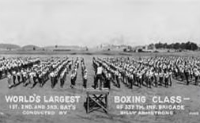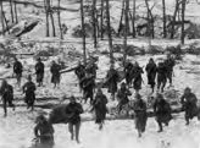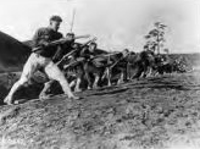Purpose This study focuses on accessibility to sports facilities that can be classified into structural leisure constraints. The purpose of this study is to explore exploratory analysis of the types of reservation methods and payment methods, which are the initial stages of consuming sports facilities, and to explore inconveniences that consumers feel when making reservations. Methods A quantitative research method was used to derive the results, and data were collected through a questionnaire survey method. The collected data were analyzed by technical statistics focusing on the reservation method, payment method, and inconvenience during reservation. Results As a result, it was found that the main types of reservation methods and payment methods were homepage, homepage/telephone, telephone, homepage/app, and account transfer and card payment, respectively. In the case of inconvenience, the procedure was complicated, address and location, and reservation method were identified as the main matters. Conclusions Efforts must be made to secure both the convenience and publicity of accessibility at an early stage, such as reservation methods and payment methods for sports facilities.
Purpose The purpose of this study was to investigate the effects of aerobic exercise intensity on body composition, health related fitness, and quality of life in elderly women. Methods 48 elderly women over 65 years of age without physical and mental problems were assigned to four groups: control group, low intensity, moderate intensity, and high intensity aerobic training group. The aerobic exercise group applied a heart rate reserve (HRR) to low-intensity group (HRR 40-55%), moderate intensity group (HRR 55-70%), high intensity group (HRR> 70%) for 12 weeks, 3 times a week for 20 minutes a day. Subjects of the control group were to maintain their usual lifestyles during the same intervention period. Body composition, health related fitness, and quality of life were measured and analyzed using repeated two-way ANOVA. Results The main results obtained in this study are as follows. 1) There was a significant decrease in sitting forward bending in the low intensity group and a significant increase in EQ-VAS. 2) There was a significant decrease in body weight, BMI, and 6 minutes walking in the moderate intensity group, and a significant increase in grip strength and EQ-VAS. 3) The high intensity group showed a significant decrease in weight, BMI, waist circumference, sitting forward bending, and 6 minutes walking, and a significant increase in grip strength, sit and stand, functional reach, and VO2max. On the other hand, there was no significant change in all variables in the control group. Conclusions In conclusion, aerobic training was found to be effective for body composition, health related fitness and quality of life in elderly women. In particular, it can be concluded that high intensity aerobic training is effective for health related fitness, and low and moderate intensity aerobic exercise is effective for improving quality of life.

Purpose This study confirmed the historical significance of the First World War US Combat Strength Training Fitness System for contributing in the ROK military sports development. Methods This research method is literature analysis to be focused by the previous US Army Field Manuals. Results Concretely, The meaning of US Army fitness training was divided into four stages. First, this study confirmed the actual condition of the US Army fitness before First World War. Since 1916, US Army has developed a group physical training program applied the items suitable for the war and has systematically reflected the program in the recruitment training. Second, this study confirmed the process of operating military fitness program during the First World War. US Army physical fitness program provided an effective method to suit soldier fitness for war. Third, this study observed the fitness training changes of US Army after the First World War. At that time, US Army focused on maintaining health and basic physical strength for civilians and reserve forces, but US Army ran parallel with basal physical fitness and combat physical fitness after the Korean War. Fourth, this study compared military strength training between First World War and current US Army. Since First World War, the training of US Army has been developed around doctrine and manuals to be maintained the consistency of the system. In conclusion, US Army physical training system of First World War meant to be provided the basis of current military physical education and physical training. In other words, current fitness training is not dogmatic but has evolved, and it accommodated the basics of soldier physical training course from the past.







PURPOSE The purpose of this study was to investigate the effects of 8-week aerobic exercise and polyphenol intake on body composition, cardiovascular response, vascular endothelial function, and physical fitness at rest and during exercise in prehypertensive men. METHODS The study included twenty-eight males in their 20-30 years of age with prehypertension. Participants in the aerobic exercise + polyphenol intake group (EX + PP; n = 14) performed aerobic exercise three sessions/week, 30 min/session, at 65% of the heart rate reserve, and consumed polyphenol (grape seed extract 300 mg) for 8 weeks. Participants in the aerobic exercise + placebo intake group (EX + PL; n = 14) performed the same aerobic exercise; however, they consumed placebo instead of polyphenol. All independent variables were measured at pre-test and post-test, and the data were analyzed. RESULTS The main results of the study were as follows: 1) SBP and MAP at rest decreased significantly in EX + PP, while MAP decreased significantly in EX + PL group. 2) In the EX + PP group, CO increased significantly, whereas DBP, MAP, and TPR decreased significantly during the hand grip exercise. In contrast, CO decreased significantly, while DBP and TPR increased significantly in the EX + PL group during the hand grip exercise. 3) Regarding vascular endothelial function, % FMD increased significantly in EX + PP group. 4) Sit-up increased significantly in both EX + PP and EX + PL groups; however, sit-and-reach in EX + PP group was significantly higher than that in EX + PL group at post-test. CONCLUSIONS The findings of this study showed that the 8-week aerobic exercise would have positive effects on body composition, cardiovascular response, and physical fitness at rest and during exercise in hypertensive men. Additionally, polyphenol intake would contribute more towards reduction of blood pressure at rest and during exercise and improvement of vascular endothelial function.
PURPOSE This study investigated the effects of moderate-intensity continuous exercise (MICE) and high-intensity interval exercise (HIIE), performed postprandially, on blood glucose, blood pressure, and blood lactate levels in men aged 40–50 with prediabetes and prehypertension. METHODS Twelve men with prediabetes and prehypertension were selected. After consuming a liquid meal, the participants participated in three trials: MICE, HIIE, and a non-exercise condition, with a one-week washout period between each trial. The trials were conducted in a counter-balanced manner to ensure equal energy expenditure across conditions. The intensity of the MICE trial was set at 70% of the heart rate reserve (HRR), whereas the HIIE trial alternated between 50% and 90% of HRR for 30 minutes. Blood glucose, blood pressure, and blood lactate levels were measured at various time points during each trial, and a two-way repeated-measures ANOVA was used for analysis. RESULTS 1) In the MICE trial, significant reductions were observed in blood glucose (at 15 and 30 minutes during exercise), systolic blood pressure (SBP) (at 50 minutes post-exercise), and diastolic blood pressure (DBP) (at 20, 40, 50, and 60 minutes post-exercise). 2) In the HIIE trial, significant reductions in blood glucose (at 15 and 30 minutes during exercise), SBP (at 40 minutes post-exercise), and DBP (at 40 minutes post-exercise) were observed. Blood lactate levels significantly increased. 3) When comparing the two exercise trials, blood glucose in the HIIE trials showed a recovery trend post-exercise, and blood lactate levels increased to a greater extent. CONCLUSIONS These findings suggest that both MICE and HIIE effectively lower blood glucose during exercise, but HIIE causes a more rapid post-exercise increase in blood glucose compared to MICE. In addition, MICE results in a smaller rise in blood lactate. Therefore, MICE is recommended for improving prediabetes and prehypertension. Future research should compare these effects in healthy individuals and examine long-term adaptations to repeated exercise.